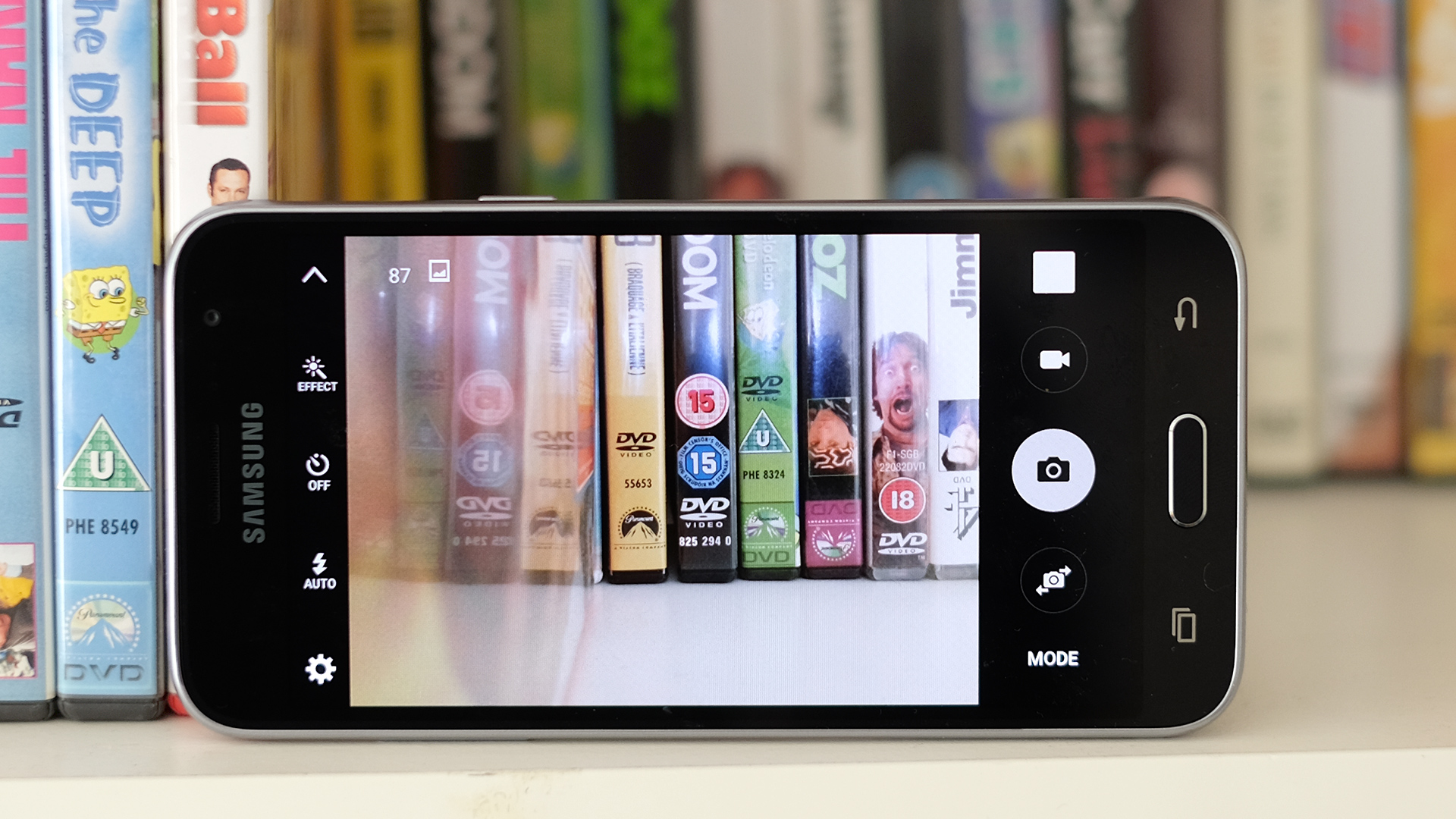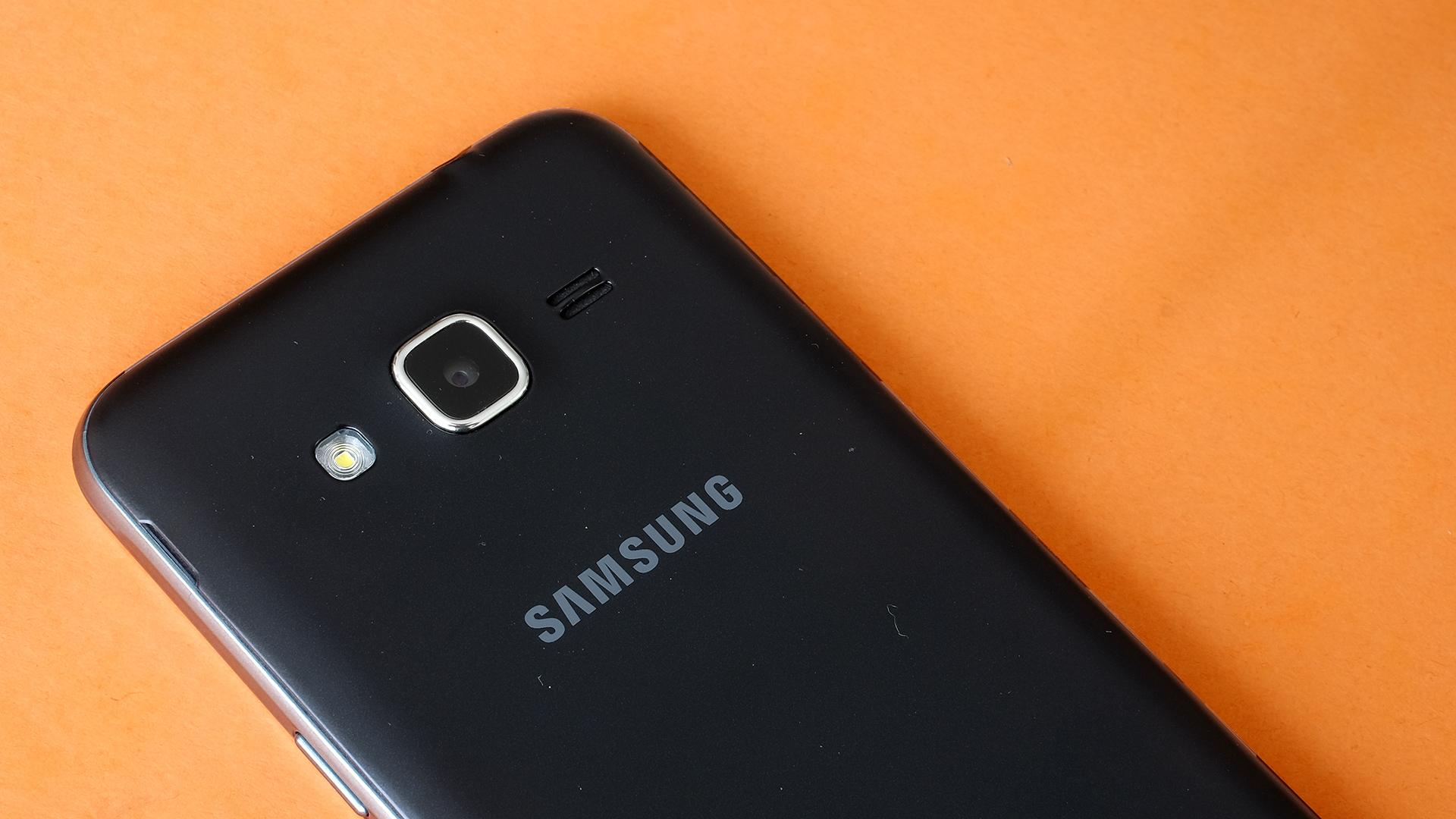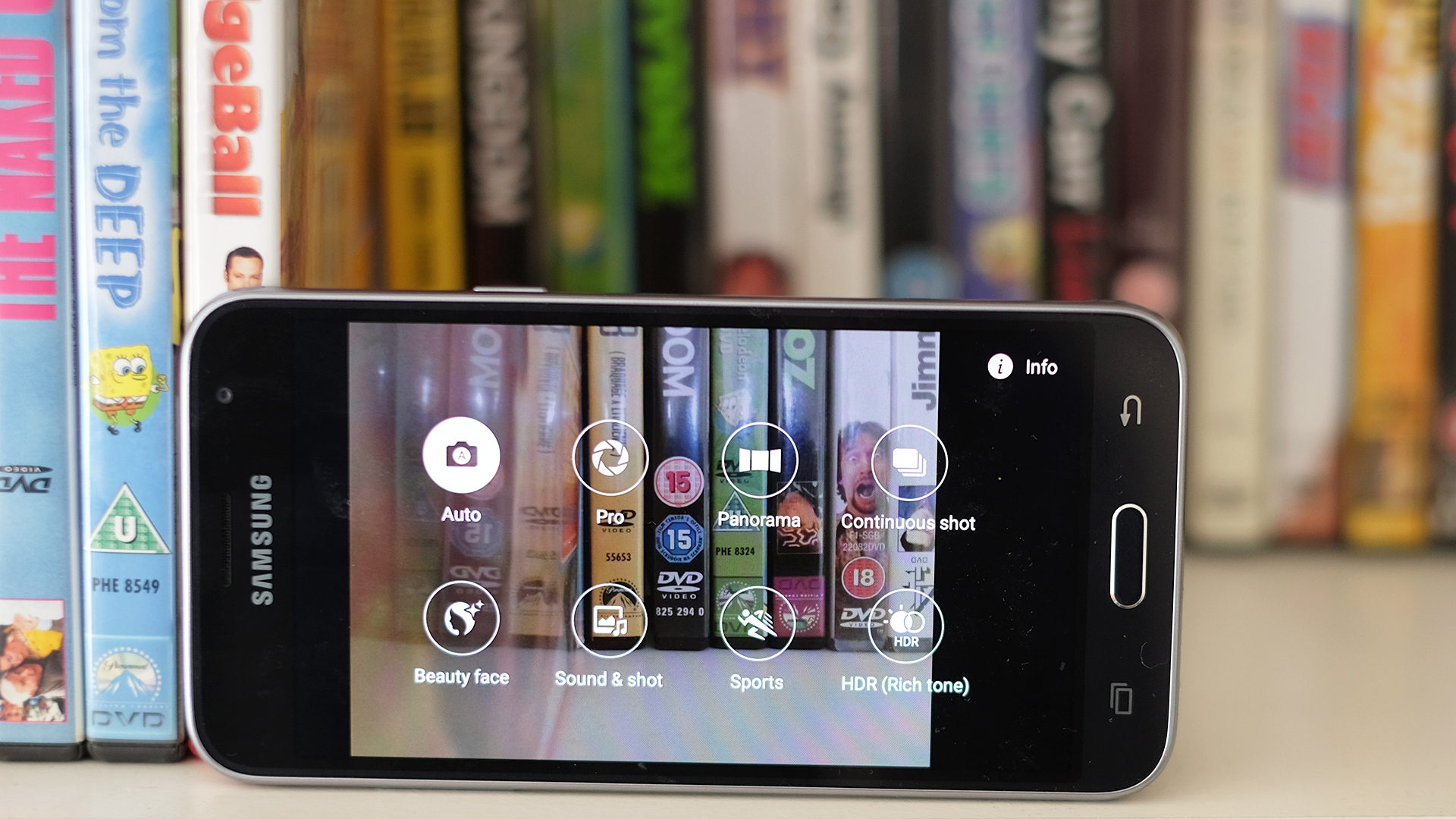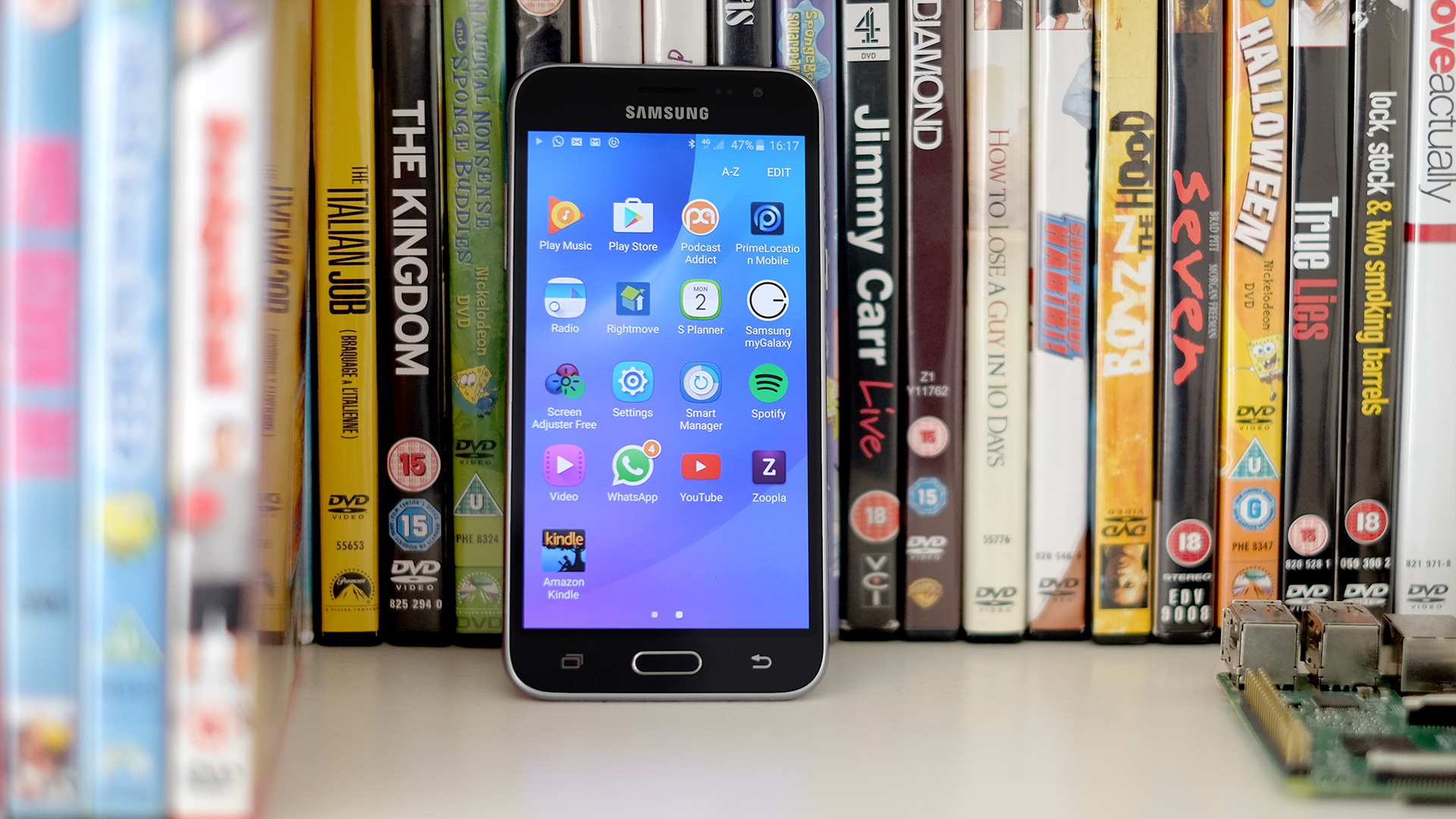Why you can trust TechRadar
Camera
- 8MP rear camera not awful for a cheap phone
- Decent HDR mode improves some shots
The Samsung Galaxy J3 has an 8MP camera on the back, matched with a single-LED flash. This is a conspicuously low-resolution sensor compared to the top budget phones, several of which use 13MP main cameras.
There are several decent low-cost 13MP sensors these around days, most notably from all-round phone sensor master Sony, OmniVision and even Samsung. The J3's lens is a bog-standard f/2.2 affair too.
Looking at some of the photos I took using the Galaxy J3 on a computer, this gives you much less scope for cropping, and means your shots will look pretty dreadful as soon as you start using the digital zoom.

The J3 also doesn't have quite as good dynamic range as the Motorola Moto G (2015) when using auto shooting; that said, though, no £150 (US$200)-ish phone has really challenged the standard that phone set when it arrived.
Low-light image quality is poor too. Shooting out on the street at night the Galaxy J3 manages to make shots look nice and bright, but fine detail is smudged out entirely and there's quite a lot of noise. Without image stabilisation to lean on the J3 can only drop its shutter speed down to 1/16 of a second, meaning it needs to use a pretty high ISO (sensitivity setting) to make images appear bright enough.
However, the Galaxy J3 isn't bad either, for a cheap phone.

I've used plenty of 8MP handsets with much poorer color fidelity and far worse lenses. The Galaxy J3's tones look quite natural most of the time, and there's no major lens distortion or chromatic aberration (color fringing); this enables the phone make good use of the resolution it has to work with.
There's also a lot to like about the Samsung camera software at this point. It's intuitive, and lets you adjust the exposure quickly and easily. When you pick a focus point an exposure level pops up right next to the shutter button, and you can flick the value up and down with your thumb.
It's a smart way to make slightly more advanced camera features 'auto-unlock' when you start getting a bit more involved with the process, rather than just pointing and shooting.

The Galaxy J3 also has a decent HDR mode, although it's not one that automatically switches itself on when needed, and it's not as good as the S7's either – no surprise there. It has a Pro mode like that top-end phone, but it's really not worth bothering with here, as, lacking shutter speed or focus control, it's very limited.
Shooting speed is passable: it's not lightning fast, but shutter lag is minimal enough to keep the J3 fun to shoot with.
Around the front the Galaxy J3 has a 5MP camera which, like the rear one, delivers relatively good color reproduction. There's a little bit of shutter lag again, but it's not terrible.
Video capture is fairly poor, maxing-out at 720p for both cameras.
Camera samples














Andrew is a freelance journalist and has been writing and editing for some of the UK's top tech and lifestyle publications including TrustedReviews, Stuff, T3, TechRadar, Lifehacker and others.

